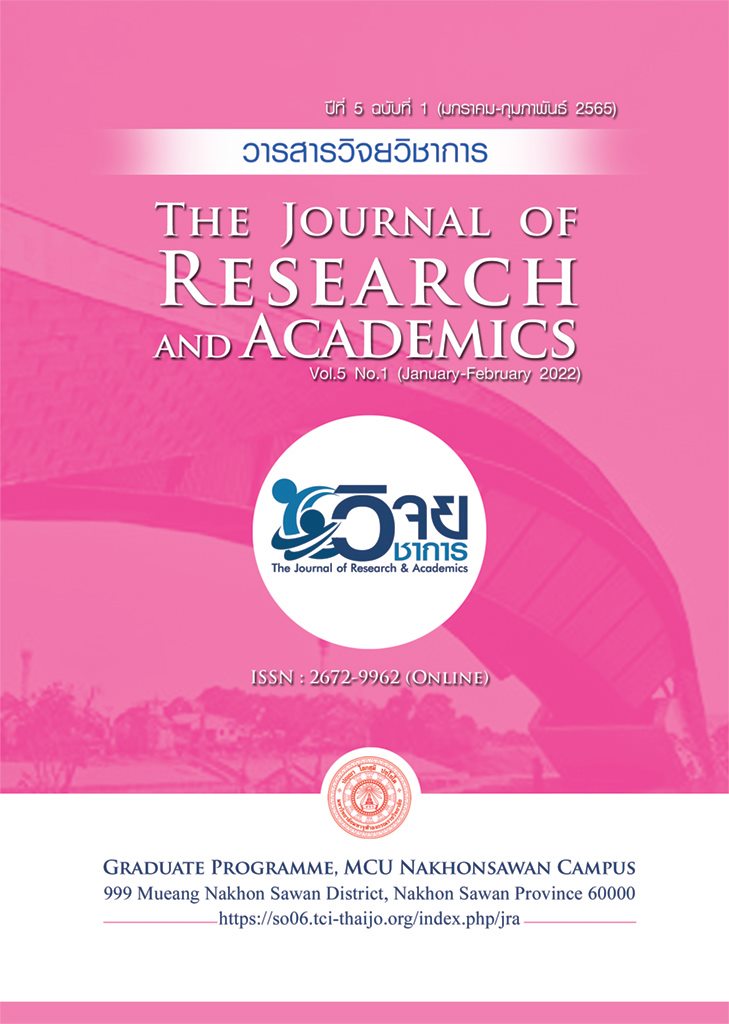Development and Validation of Work Personality Scale of New Employees
Main Article Content
Abstract
The purposes of this research were to develop and examine the quality of the new employee personality scale. The researcher developed the employee personality scale by constructing 28 questions from the David B. Hershenson's definition of working personality according to work adjustment model which consisted of three components: self-concept as working persons, job motivation, and work ethics. The results of the research found that in the aspect of the results of the content validity examination by 5 experts of 28 questions using IOC index analysis, it was found that 28 questions passed the IOC index criteria (IOC values between .80 to 1). The results of the CITC analysis revealed that the question elements of self-concept as a working person passed 5 out of 8 selections (CITC values between .470 - .683). For motivation component questions, 7 of the 9 items were selected (CITC values between .759 - .847) and 6 of the 11 work ethics component questions were selected (CITC values between .40-.60). The validity analysis results were found that the conceptual component of job motivation and work ethics had alpha values of .83, .94 and .80, respectively, and the working personality measurement model was consistent with the empirical data (c2 = .09, df = 1, p = .76816). RMSEA was .000, CFI was 1.00, GFI was 1.00, and SRMR was .025.
Article Details

This work is licensed under a Creative Commons Attribution-NonCommercial-NoDerivatives 4.0 International License.
1. เนื้อหาและข้อมูลในบทความที่ลงพิมพ์กับวารสารวิจยวิชาการ ถือเป็นข้อคิดเห็น และความรับผิดชอบของผู้เขียนบทความโดยตรงซึ่งกองบรรณาธิการวารสารไม่จำเป็นต้องเห็นด้วย หรือร่วมรับผิดชอบใด ๆ
2. บทความ ข้อมูล เนื้อหา รูปภาพ ฯลฯ ที่ได้รับการตีพิมพ์ในวารสารวิจยวิชาการ ถือเป็นลิขสิทธิ์ของวารสารวิจยวิชาการ หากบุคคลหรือหน่วยงานใดต้องการนำทั้งหมดหรือส่วนหนึ่ง ส่วนใดไปเผยแพร่ต่อหรือเพื่อการกระทำการใด ๆ จะต้องได้รับอนุญาตเป็นลายลักษณ์อักษรจากวารสารวิจยวิชาการก่อนเท่านั้น
References
ประสพชัย พสุนนท์. (2558). ความเที่ยงตรงของแบบสอบถามสำหรับงานวิจัยทางสังคม ศาสตร์. วารสารสังคมศาสตร์ มหาวิทยาลัยศรีนครินทรวิโรฒ, 10(มกราคม-ธันวาคม), 375-396.
รุ่งโรจน์ สงสระบุญ. (2561). แบบจำลองสมการโครงสร้างเพื่อการทำนาย. วารสารมหาวิทยาลัยศิลปากร, 38(1), 185-205.
สุภมาส อังศุโชติ และคณะ. (2554). สถิติวิเคราะห์สำหรับการวิจัยทางสังคมศาสตร์และพฤติกรรมศาสตร์: เทคนิคการใช้โปรแกรม LISREL. กรุงเทพฯ: เจริญดีมั่นคงการพิมพ์.
Hershenson, D. B. (1996). Work adjustment: A neglected area in career counseling. Journal of Counseling & Development, 74(5), 442-446.
Ladhari, R. (2010). Developing e-service quality scales: A literature review. Journal of Retailing and Consumer Services, 17(6), 464-477.
Smith, L. D. (2005). A clarification and examination of aspects of Hershenson's theory of work adjustment with college students. Memphis: The University of Memphis.
Strauser, D. R. et al, C. (2020). Work Personality, Core Self-evaluation and Perceived Career Barriers in Young Adult Central Nervous System Cancer Survivors. J Occup Rehabil, 31(1), 119-128.
Strauser, D. R., and Keim, J. (2002). Developmental Work Personality Scale:An Initial Analysis. Rehabilitation Counseling Bulletin, 45(2), 105-113.


